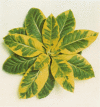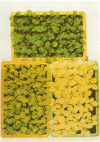Abstract
A new tobacco (Nicotiana tabacum) aurea mutant was isolated from the progeny of a selfed variegated tobacco plant. The new mutant is termed Su/su var. Aurea. If the mutant is selfed, the seeds obtained give rise to four types of plants: green seedlings which correspond to the wild type; yellow-green seedlings which correspond to the earlier described Su/su; yellow seedlings which correspond to the new tobacco aurea mutant Su/su var. Aurea; and white lethal seedlings. The frequency ratio of the four phenotypes is 1:1:1:1. It appears that the mutation is due to two independent nuclear factors, su and aur, both of which have to be present in a heterozygous conditions, Su/su Aur/aur, to give rise to the new aurea phenotype. The aurea mutant Su/su var. Aurea has a reduced photosynthetic unit size which is approximately one-eighth of the wild type. Despite its chlorophyll deficiency, the plant grows well and exhibits maximal photosynthetic rates on a chlorophyll basis which are at least seven times higher than those of the green wild type provided the temperature and the light intensities are high enough. In contrast to the earlier described Su/su, the new mutant does not exhibit more photorespiration than the wild type. It appears that the factor aur causes either repression of photorespiration or an increase in the number of functioning photosynthetic units.
Full text
PDF
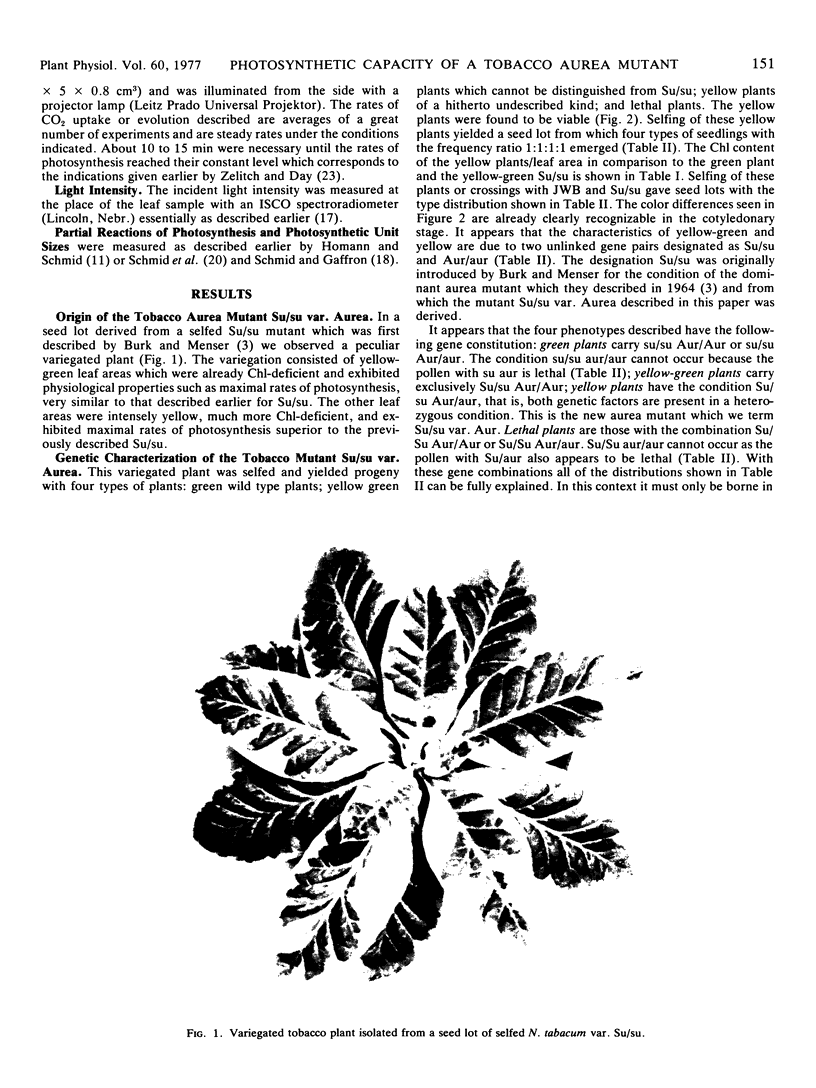
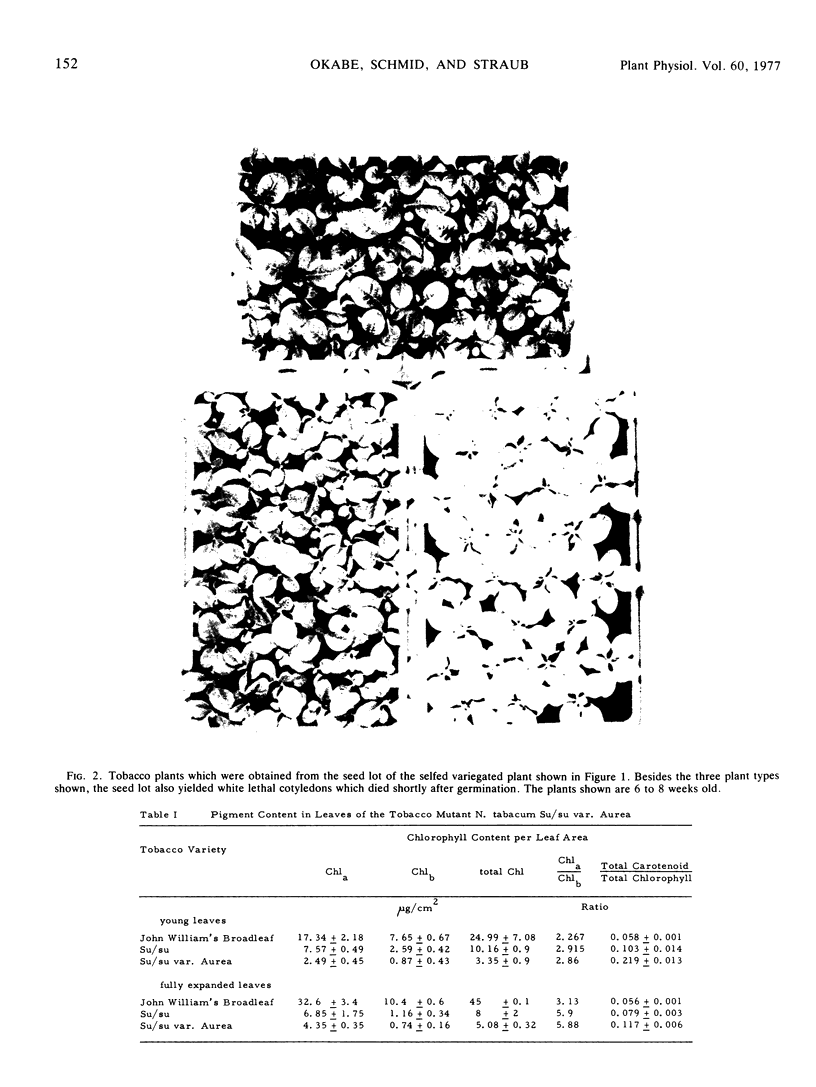
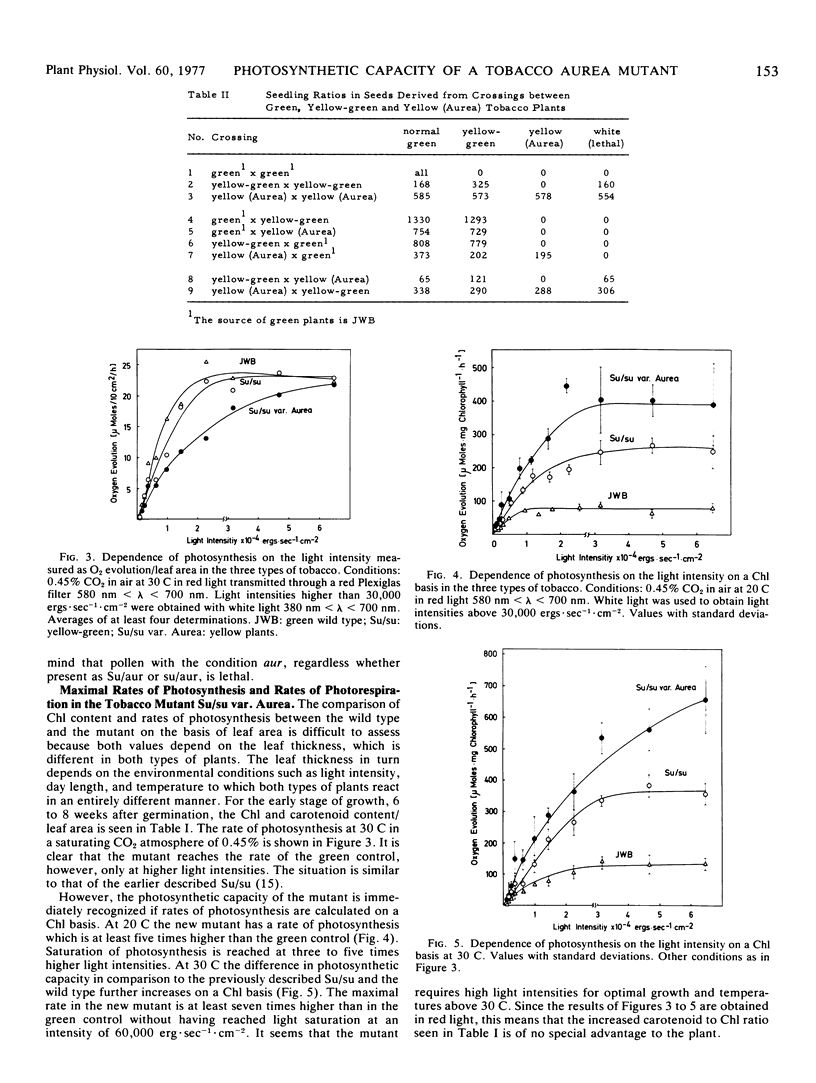
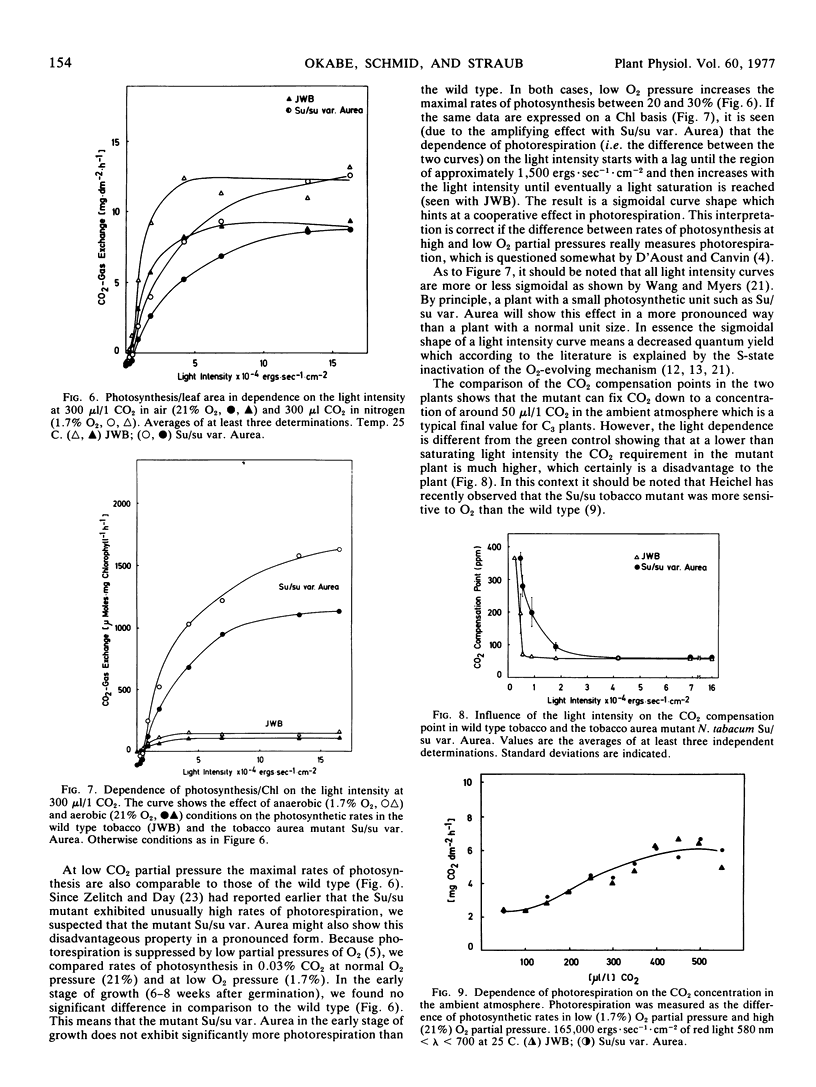
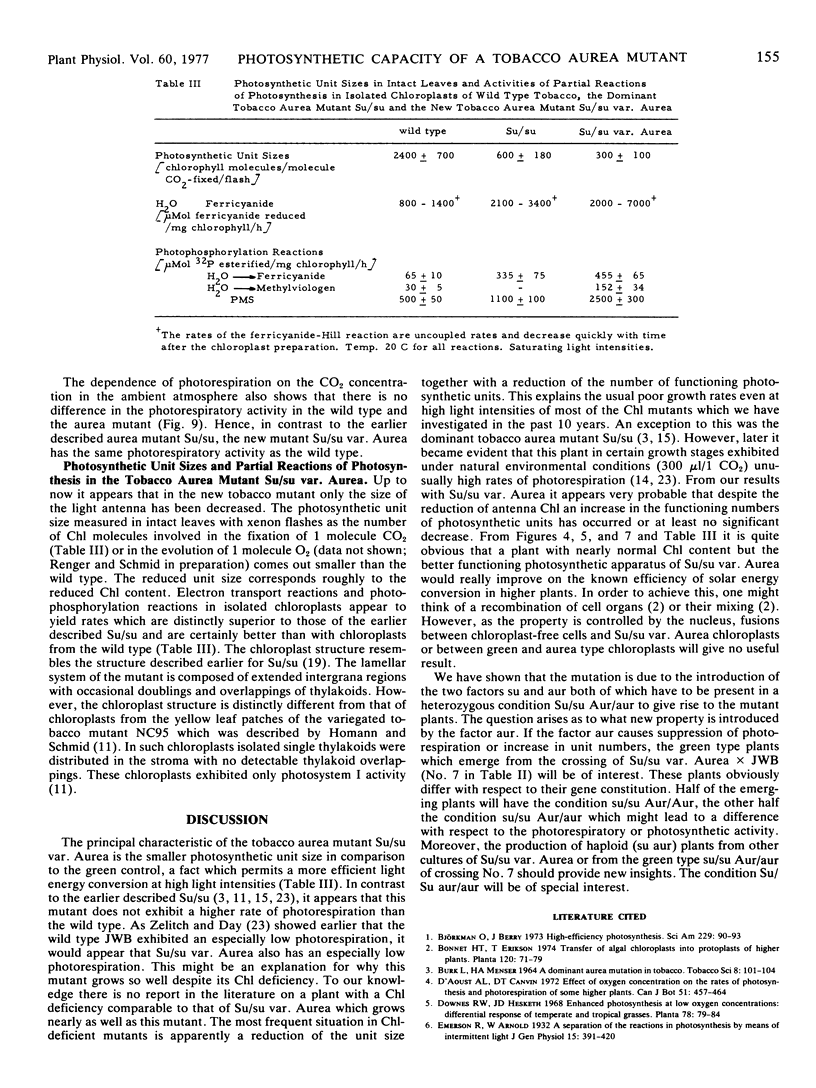

Images in this article
Selected References
These references are in PubMed. This may not be the complete list of references from this article.
- Highkin H. R., Frenkel A. W. Studies of growth & metabolism of a barley mutant lacking chlorophyll b. Plant Physiol. 1962 Nov;37(6):814–820. doi: 10.1104/pp.37.6.814. [DOI] [PMC free article] [PubMed] [Google Scholar]
- Homann P. H., Schmid G. H. Photosynthetic reactions of chloroplasts with unusual structures. Plant Physiol. 1967 Nov;42(11):1619–1632. doi: 10.1104/pp.42.11.1619. [DOI] [PMC free article] [PubMed] [Google Scholar]
- Joliot P. Cinétiques des réactions liées a l'émission d'oxygène photosynthétique. Biochim Biophys Acta. 1965 May 25;102(1):116–134. [PubMed] [Google Scholar]
- Kok B., Forbush B., McGloin M. Cooperation of charges in photosynthetic O2 evolution-I. A linear four step mechanism. Photochem Photobiol. 1970 Jun;11(6):457–475. doi: 10.1111/j.1751-1097.1970.tb06017.x. [DOI] [PubMed] [Google Scholar]
- Salin M. L., Homann P. H. Changes of photorespiratory activity with leaf age. Plant Physiol. 1971 Aug;48(2):193–196. doi: 10.1104/pp.48.2.193. [DOI] [PMC free article] [PubMed] [Google Scholar]
- Wang R. T., Myers J. On the state 1-state 2 phenomenon in photosynthesis. Biochim Biophys Acta. 1974 Apr 23;347(1):134–140. doi: 10.1016/0005-2728(74)90206-0. [DOI] [PubMed] [Google Scholar]



